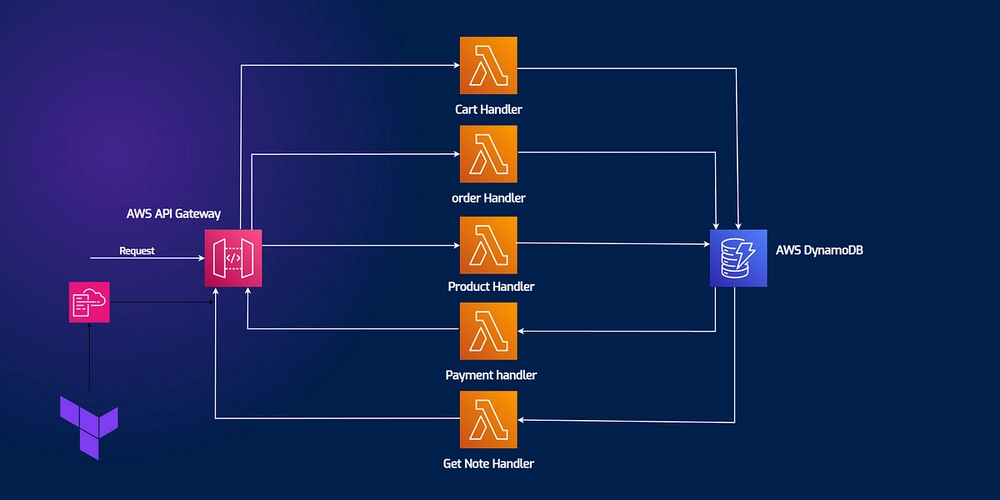Blog Post from blog_draft_monetization_strategies_for_ai_technologies_20250420_104103.md
Generated: 2025-04-20 10:41:03 Comprehensive Monetization Strategies for AI Technologies Introduction Artificial Intelligence (AI) is reshaping industries at an unprecedented pace, offering remarkable solutions through advancements in Machine Learning, Natural Language Processing, Deep Learning, and Computer Vision. As organizations increasingly seek to harness the power of AI, establishing effective monetization strategies is essential for those looking to capitalize on market trends. This comprehensive monetization plan outlines key strategies, actionable insights, and relevant examples, all aimed at guiding businesses and developers in securing sustainable revenue streams from AI technologies. 1. Target Audience Defining the Audience Key to any monetization plan is understanding who will benefit from these AI technologies. Our audience can be segmented into several categories: Businesses: Organizations aiming to adopt AI solutions for improved operational efficiency or competitive advantages. Developers: Tech-savvy individuals seeking tools, educational resources, or community engagement opportunities related to AI. Researchers and Scientists: Professionals wanting to leverage AI for accelerating research initiatives and scientific exploration. End-users: Consumers interested in utilizing AI tools that enrich their personal or professional lives. A targeted marketing approach directed at each audience segment will enhance engagement and uptake of AI solutions. 2. Core Value Proposition Proposition Overview The core value of AI technologies lies in their potential to enhance productivity, unlock new opportunities, and streamline operations across various industries. By harnessing AI capabilities, organizations can: Improve Decision-making: AI offers data-driven insights that enhance the quality of decision-making processes. Facilitate Innovation: Developers can access advanced tools conducive to creating innovative solutions. Simplify Daily Tasks: End-users benefit from time-saving AI tools that simplify mundane tasks. The narrative of improvement in resource efficiency through responsible AI development resonates with each of these audience segments. 3. Standard Monetization Streams Successful monetization stems from implementing a mix of strategies. Here are key standard monetization streams for AI: 3.1 Subscription Models Details: Offering tiered subscription plans for AI tools and services allows for recurring revenue. Example: DataRobot, a progressive startup, uses subscription pricing to provide users access to machine learning tools tailored to various data projects. Justification: Subscription models ensure consistent cash flow, allowing companies to invest in ongoing development and feature enhancements. 3.2 Freemium Models Details: Providing basic tools at no cost with options for paid upgrades encourages user acquisition. Example: Grammarly provides basic grammar checks for free, charging for premium features like advanced language processing and stylistic suggestions. Justification: This model effectively encourages widespread adoption while creating a funnel for potential paid conversions. 3.3 Consulting Services Details: Offering expert consulting services assists organizations in effectively integrating AI technologies into their operations. Example: McKinsey & Company provides tailored consulting strategies that guide businesses in navigating AI adoption. Justification: The demand for knowledgeable guides in the AI journey is growing, allowing consultants to command premium prices. 4. Creative Monetization Streams 4.1 Engaging Content Creation Creating engaging content can serve as a dynamic revenue stream through various means. Three-Part Storytelling Framework: Utilizing captivating narratives about AI advancements can be shared on platforms like YouTube or on dedicated blogs. Eye-Catching Thumbnails: Using compelling visuals for videos increases click-through rates. Interactive Polls: Incorporating audience participation leads to improved engagement and community connections. 4.2 Hosting Workshops and Webinars Details: Conducting educational workshops and webinars enables organizations to monetize knowledge. Example: A series titled "AI for Business" educates potential adopters about machine learning, generating revenue via ticket sales or recorded sessions. Success Rate: A paid webinar series on AI implementation strategies generated $10,000 in revenue. 4.3 Affiliate Marketing Strategies Details: Partnering with established platforms can generate income through referral commissions. Potential Partners: Companies like Amazon for AI literature or Udemy for AI educational courses increase reach while generating affiliate commissions. Success Rate: Increased traffic to affiliate links

Generated: 2025-04-20 10:41:03
Comprehensive Monetization Strategies for AI Technologies
Introduction
Artificial Intelligence (AI) is reshaping industries at an unprecedented pace, offering remarkable solutions through advancements in Machine Learning, Natural Language Processing, Deep Learning, and Computer Vision. As organizations increasingly seek to harness the power of AI, establishing effective monetization strategies is essential for those looking to capitalize on market trends. This comprehensive monetization plan outlines key strategies, actionable insights, and relevant examples, all aimed at guiding businesses and developers in securing sustainable revenue streams from AI technologies.
1. Target Audience
Defining the Audience
Key to any monetization plan is understanding who will benefit from these AI technologies. Our audience can be segmented into several categories:
- Businesses: Organizations aiming to adopt AI solutions for improved operational efficiency or competitive advantages.
- Developers: Tech-savvy individuals seeking tools, educational resources, or community engagement opportunities related to AI.
- Researchers and Scientists: Professionals wanting to leverage AI for accelerating research initiatives and scientific exploration.
- End-users: Consumers interested in utilizing AI tools that enrich their personal or professional lives.
A targeted marketing approach directed at each audience segment will enhance engagement and uptake of AI solutions.
2. Core Value Proposition
Proposition Overview
The core value of AI technologies lies in their potential to enhance productivity, unlock new opportunities, and streamline operations across various industries. By harnessing AI capabilities, organizations can:
- Improve Decision-making: AI offers data-driven insights that enhance the quality of decision-making processes.
- Facilitate Innovation: Developers can access advanced tools conducive to creating innovative solutions.
- Simplify Daily Tasks: End-users benefit from time-saving AI tools that simplify mundane tasks.
The narrative of improvement in resource efficiency through responsible AI development resonates with each of these audience segments.
3. Standard Monetization Streams
Successful monetization stems from implementing a mix of strategies. Here are key standard monetization streams for AI:
3.1 Subscription Models
Details: Offering tiered subscription plans for AI tools and services allows for recurring revenue.
- Example: DataRobot, a progressive startup, uses subscription pricing to provide users access to machine learning tools tailored to various data projects.
- Justification: Subscription models ensure consistent cash flow, allowing companies to invest in ongoing development and feature enhancements.
3.2 Freemium Models
Details: Providing basic tools at no cost with options for paid upgrades encourages user acquisition.
- Example: Grammarly provides basic grammar checks for free, charging for premium features like advanced language processing and stylistic suggestions.
- Justification: This model effectively encourages widespread adoption while creating a funnel for potential paid conversions.
3.3 Consulting Services
Details: Offering expert consulting services assists organizations in effectively integrating AI technologies into their operations.
- Example: McKinsey & Company provides tailored consulting strategies that guide businesses in navigating AI adoption.
- Justification: The demand for knowledgeable guides in the AI journey is growing, allowing consultants to command premium prices.
4. Creative Monetization Streams
4.1 Engaging Content Creation
Creating engaging content can serve as a dynamic revenue stream through various means.
- Three-Part Storytelling Framework: Utilizing captivating narratives about AI advancements can be shared on platforms like YouTube or on dedicated blogs.
- Eye-Catching Thumbnails: Using compelling visuals for videos increases click-through rates.
- Interactive Polls: Incorporating audience participation leads to improved engagement and community connections.
4.2 Hosting Workshops and Webinars
Details: Conducting educational workshops and webinars enables organizations to monetize knowledge.
- Example: A series titled "AI for Business" educates potential adopters about machine learning, generating revenue via ticket sales or recorded sessions.
- Success Rate: A paid webinar series on AI implementation strategies generated $10,000 in revenue.
4.3 Affiliate Marketing Strategies
Details: Partnering with established platforms can generate income through referral commissions.
- Potential Partners: Companies like Amazon for AI literature or Udemy for AI educational courses increase reach while generating affiliate commissions.
- Success Rate: Increased traffic to affiliate links can significantly boost revenue.
5. Implementation Priorities
To maximize the impact of the monetization strategies, prioritization is vital:
- Subscription Models: These provide stable revenue and are often easier to scale.
- Freemium Models: Immediate user engagement through free offerings can drive rapid adoption.
- Workshops/Webinars: Promoting community engagement and generating immediate revenue through educational sessions.
- Consulting Services: Building expertise in a consultative role can lead to lucrative opportunities tailored to business needs.
- Content Creation: Focus on engaging audiences to increase brand awareness and authority over time.
6. Success Metrics
Tracking progress against clearly defined metrics is essential for gauging the success of monetization efforts:
- User Acquisition Rate: Analyze monthly active users derived from implemented strategies.
- Conversion Rates: Measure the percentage of users transitioning from free to paid offerings.
- Engagement Rate: Track interactions with content from webinars, blogs, and social media initiatives.
- Revenue Generation: Monthly tracking of revenue across various models to ensure profitability.
- Customer Feedback: Glean qualitative and quantitative insights to iteratively improve products and services.
7. Risks and Mitigation Strategies
Every monetization strategy comes with inherent risks. Addressing these through proactive mitigation strategies is crucial for sustainable operations:
- Data Privacy Concerns: Organizations must implement stringent data governance policies to safeguard user data and comply with regulations.
- Market Saturation: Regular competitor analysis is essential to maintain a unique selling proposition, enabling differentiation.
- Development Costs: Employ a lean methodology during the development phase to manage budget constraints effectively while scaling operations.
Conclusion
Incorporating a multifaceted approach that integrates both traditional and creative monetization strategies ensures that organizations in the AI technology arena are well-positioned to generate sustained growth. Each strategy must align with established metrics to ensure they meet audience needs and adapt to evolving market trends. Moreover, maintaining an ethical posture within the AI landscape will help build consumer trust and drive long-term success.
Call to Action: Engage with us as we explore the exciting landscape of AI technologies. Whether you are a business leader, developer, or enthusiast, there has never been a better time to explore AI's transformative potential. Dive into our content, participate in our webinars, and take the next step toward unlocking the future of AI today!









































































































































































![[The AI Show Episode 144]: ChatGPT’s New Memory, Shopify CEO’s Leaked “AI First” Memo, Google Cloud Next Releases, o3 and o4-mini Coming Soon & Llama 4’s Rocky Launch](https://www.marketingaiinstitute.com/hubfs/ep%20144%20cover.png)



























































































































![[DEALS] The All-in-One Microsoft Office Pro 2019 for Windows: Lifetime License + Windows 11 Pro Bundle (89% off) & Other Deals Up To 98% Off](https://www.javacodegeeks.com/wp-content/uploads/2012/12/jcg-logo.jpg)


















































































































































_Andreas_Prott_Alamy.jpg?width=1280&auto=webp&quality=80&disable=upscale#)

































































































![What features do you get with Gemini Advanced? [April 2025]](https://i0.wp.com/9to5google.com/wp-content/uploads/sites/4/2024/02/gemini-advanced-cover.jpg?resize=1200%2C628&quality=82&strip=all&ssl=1)











![Apple Shares Official Trailer for 'Long Way Home' Starring Ewan McGregor and Charley Boorman [Video]](https://www.iclarified.com/images/news/97069/97069/97069-640.jpg)
![Apple Watch Series 10 Back On Sale for $299! [Lowest Price Ever]](https://www.iclarified.com/images/news/96657/96657/96657-640.jpg)
![EU Postpones Apple App Store Fines Amid Tariff Negotiations [Report]](https://www.iclarified.com/images/news/97068/97068/97068-640.jpg)


































































































































